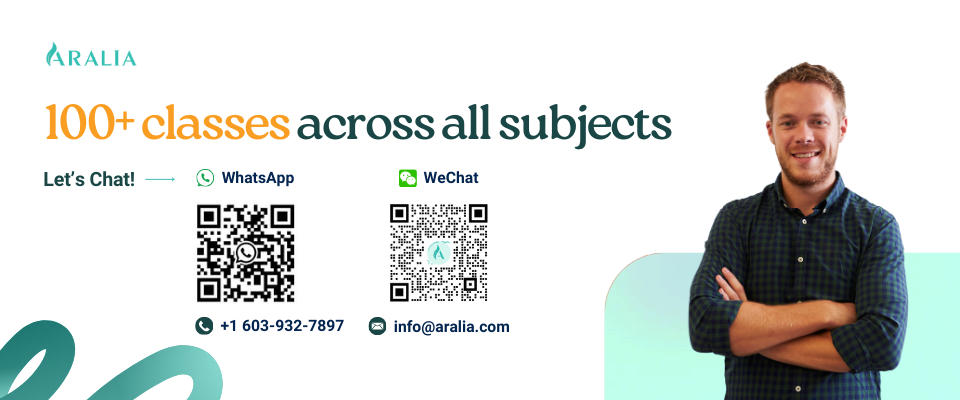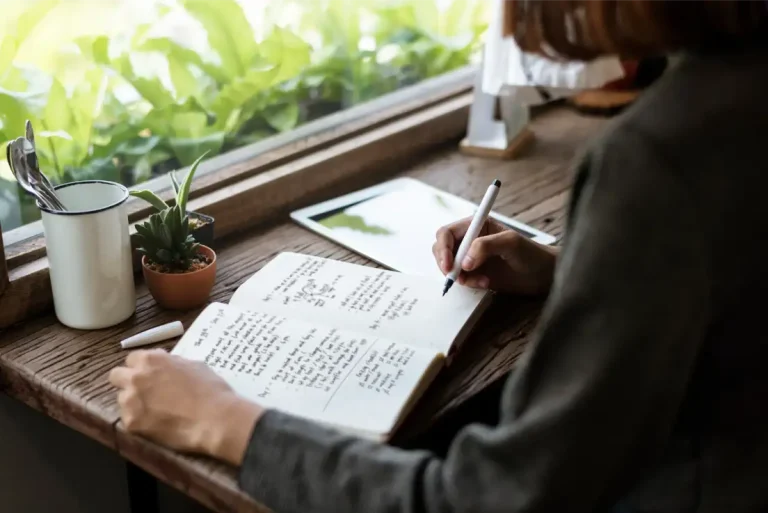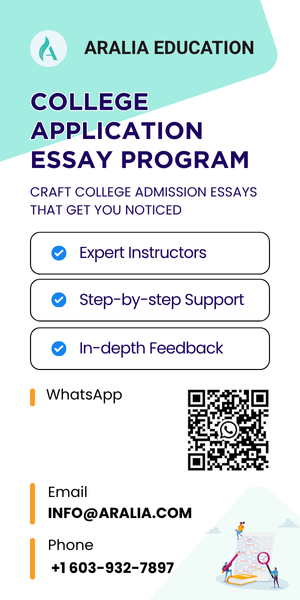This article provides some valuable tips to compile the best portfolio possible to give you the highest chance of getting into your dream school. Here are five tips to help you create an amazing portfolio for college admissions:
What is an Art Portfolio?
This type of portfolio is not simply a collection of your work, but a journey that exemplifies one’s artistic skills, ideas, thoughts, and development over time. It should express one’s creative thoughts, personality, artistic abilities, and ambitions to give admission officers a clear image of your current artistic skill and goals.
Suppose you are interested in art, maybe visual art, fine art or designer animation, but don’t have formal pieces for your portfolio. In that case, you should find ways to develop artwork you’ll feel proud to put into your portfolio that will make you stand out from the crowd. Certain extracurricular activities, such as joining an art club, participating in art competitions, or pre-college art programs can facilitate this, and often even have more advice or resources to prepare for college admissions. Ask your high school advisor or counselor for help finding these opportunities. If you are in the process of creating an art portfolio and need inspiration, check out three artworks from our students in our related Portfolio Prep class.
Now, let’s explore some tips for your portfolio!
How do I make a portfolio?
Depending on a school’s requirements, a portfolio can be in one or multiple formats: online PDF, print, or a website are just a few. For students interested in creating online art portfolios through a hosting website, consider using one of these platforms that our students love:
- Webflow is a website building and hosting service. They also provide different themes and subject matters for students to choose from, and an online visual editor. However, be aware that Webflow can have a steep learning curve, since you must be familiar with website development before effectively using this platform. To avoid this, you can also take the easy route and choose a free theme (though we prefer the paid ones because they are so much nicer and aesthetically pleasing)!
- In addition to Webflow, there is Squarespace, WordPress, and Wix. They offer similar services as Webflow, but Squarespace themes have a more minimalistic, elegant vibe. Due to the popularity, you may see a lot of Squarespace sites on the internet, so they may stand out less. Wix is another great platform that offers similar types of service. WordPress is highly customizable but can take more time to format correctly. Many professional artists use WordPress to exhibit their online portfolios.
- Instagram is also a valuable platform to share your work publicly and allow your work to be seen by millions of people. Keep in mind that Instagram is a great platform to promote your artwork, but various colleges don’t accept Instagram posts as a form of portfolio for college applications.
- ArtStation is a more art-specific platform that is used by many professional artists (such as interior designer or graphic designer) to share their portfolio with potential employers and one another. ArtStation is a valuable place to showcase your work, as its format is already built for artists, and it could even help you get noticed by employers and peers.
1. Double and triple check the school’s requirements
Double-checking the portfolio requirements for each school you are applying to is an important step in the college application process for aspiring artists. Before submitting your college application or artwork, it’s essential to do your research and make sure that you are meeting the requirements of the school’s art program. Every college has different criteria and may require different types of artwork or information from applicants. Each school will also have different requirements regarding the size and format of your portfolio, the medium, the number of required pieces, etc. Students need to understand and follow these requirements; after which they can feel free to be creative with other aspects of their portfolio as long as they stay within these guidelines.
By double-checking the portfolio requirements, you can be sure that you are submitting a complete and accurate portfolio following all necessary guidelines. This will help to ensure that your portfolio is properly reviewed and considered for admission, giving you the best chance for success.
2. Be strategic when organizing your examples
Schools typically encourage students to submit artwork from various mediums to demonstrate their depth and breadth. However, it’s still crucial to be intentional with the pieces or visual elements you choose to include, and even how you organize them. A good way to think about the organization of your portfolio is to think of it as a story you want to tell the admissions committee. The admissions officer reviewing your portfolio should be able understand your creative process, technical skills, and growth as an artist. To draft a “story” for your portfolio, you should first think about the meaning and intention of each piece. The narrative that you choose can be something more concrete– like your transition from physical to digital artistic mediums– or something more abstract—like your gradual process of confronting your fears and insecurities through art. Even though the medium or topic may be different, they can still fit into a narrative about your journey as an artist. You should ensure that the story or message you want to communicate is immediately obvious and clear to viewers. A good way to check this is to have a friend or peer who has never seen your portfolio before review your work and give you feedback about what they thought your message was, allowing you to see if your intentions were communicated. Sometimes because you have looked at your pieces so many times, your brain naturally connects and creates a story that first-time viewers won’t be able to connect with.
The quality of the work you include should always be prioritized over quantity, as it is better to express more with less. The admission officer would prefer it if you went deeper into each piece and explained your understanding rather than showcasing 30+ works with no depth. Each piece should convey your opinions and represent your capabilities and talents.
3. Keep track of your progress
When working on art that you may want to include in your portfolio, you should keep a record of each step in your creative process, from brainstorming and inspiration to concept art and final presentation. This can look like taking a photo of each step, or saving various drafts of your piece throughout the project, depending on your medium. This will be especially useful for certain schools that want to see proof of your process; but even for colleges that are only interested in the final product, remembering and understanding your process can help you in interviews and other areas of your application.
You don’t necessarily need the best lighting or photography gear for this task – just make sure that all images are clear enough to clearly see what is being depicted. Be sure to create a folder specifically for storing all your work as well as organize them by date, medium, size, etc. Additionally, consider uploading all of your photos onto some type of cloud storage in order to ensure that they are saved securely and kept safe from any potential damage or loss.
4. Understand each piece, and know how to discuss its strength and limitations
Understanding your personal intentions behind your artwork and accurately analyzing your own skills are essential to creating an impressive portfolio and being prepared for the rest of the application process. You should have a thorough understanding of the strengths and weaknesses of your artwork, meaning that, especially if the piece is older, be sure to take time to reevaluate your intentions behind the piece, and notice where you have improved, and where you may need more practice. Knowing these things beforehand will help you better explain each piece and its meaning when you present them during interviews or portfolio reviews.
Additionally, consider practicing for interviews by recording yourself or enlisting the help of a teacher or friend so that you have experience discussing your artwork in-depth. Be sure to include information about your strengths and limitations, as well as your future direction when talking about yourself and your portfolio – this will be especially important for schools to get a clear picture of your long-term artistic goals and interests.
5. Get personal and professional portfolio advice
Creating a portfolio is a challenging and highly personal process. Hence, it is important to seek both personal and professional advice before finalizing your portfolio. Personal advice from your parents, friends, or peers can help you refine your narrative or message, and make sure that it accurately represents your personal journey and values. Professional advice will give you a more objective perspective and help you refine your message and presentation. There are many opportunities to receive professional advice, such as attending National Portfolio Day.
National Portfolio Day, hosted by the NPDA (National Portfolio Day Association), is a 100% free portfolio show event where you can receive advice to improve your portfolio. We suggest that students should first attend this event in the fall of their junior year to get an overall view of what portfolio critique is like, and then again during their senior year before finalizing their portfolio.
This event attracts students worldwide who are interested in pursuing art and looking for inspiration and advice from professionals. The attending school list can be found on the website.
In addition to the National Portfolio Day, students can also attend AICAD Slideroom Portfolio Review. AICAD is The Association of Independent Colleges of Art & Design (AICAD), a non-profit consortium of the leading specialized arts and design schools in the US and Canada. AICAD comprises different portfolio experts to provide you with informal advice on developing your portfolio. You can upload your portfolio to the link above to receive feedback on your artwork. Students will have to indicate an interest in AICAD schools to receive feedback reviews.
Participating schools in AICAD include many prestigious art schools in the US and Canada, such as RISD, CCA, Pratt Institute, etc., as well as schools outside of North America: Bezalel Academy of Arts and Design, Burren College of Art, China Academy of Art, LASALLE College of the Arts, Nanjing University of the Arts, Osaka University of Arts.
Some schools also offer independent portfolio reviews. For example, RISD hosts portfolio day events online for high school students to receive feedback from RISD before applying. Students can register here.
If you need help creating pieces or building your portfolio, feel free to contact Aralia for assistance! We are opening up slots for one of the top-rated courses! More information about the course is available below:
Further Your Art Skills with Aralia

During this intensive portfolio preparation, online course students will carry out a series of drawing, design, and three-dimensional projects to promote creative investigation, experimentation with materials, risk-taking, and critical dialogue. These creative practices will engage students in a foundational experience, develop intellectual and practical skills and elicit the confidence necessary to do so.

Students will dip their toes into the world of publishing-chapbook making. Participants will write and polish 4 poems and 1 short story or creative non-fiction, assemble their work into a portfolio, and publish it in a stylish, professional manner in the form of a print or digital chapbook. Students will be given a training in InDesign to create a completed chapbook.











